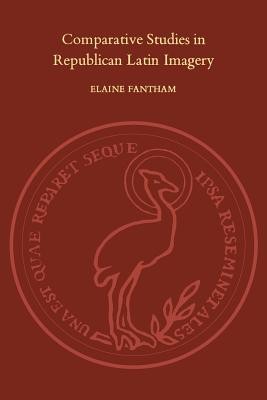
- We will send in 10–14 business days.
- Author: Elaine Fantham
- Publisher: University of Toronto Press
- Year: 1972
- Pages: 234
- ISBN-10: 1487598467
- ISBN-13: 9781487598464
- Format: 15.2 x 22.9 x 1.4 cm, softcover
- Language: English
- SAVE -10% with code: EXTRA
Reviews
Description
Of all stylistic devices, imagery has the greatest appeal to the imagination, but is also the most likely to offend, either by staleness or by tasteless excess. This volume establishes some of the limitations which govern figurative language in Latin speech and prose by exploring such questions as these: From what physical or social contexts is Latin imagery derived? To what extent is it influenced by the primacy of Greek as a cultural language and the derivation of the earliest Latin literature from Greek models? How are the metaphors expressed in terms of syntax, through verb, noun, adjective, or a combination of syntactical forms? How are the form and content of imagery related to the literary genre? In this study Professor Fantham analyses in detail the conservative imagery of Terence and of Cicero's letters, contrasting this naturalistic language with the fantasies of Plautus and the formalization of Cicero's speeches. A separate chapter on the de Oratore shows how the thematic and structural use of metaphor and analogy provide balance and continuity, giving Latin prose imagery its full role in a mature classical work of art. Numerous illustrative passages from Greek New Comedy, Terence, Plautus, and Cicero are reproduced in the text.
EXTRA 10 % discount with code: EXTRA
The promotion ends in 17d.09:39:39
The discount code is valid when purchasing from 10 €. Discounts do not stack.
- Author: Elaine Fantham
- Publisher: University of Toronto Press
- Year: 1972
- Pages: 234
- ISBN-10: 1487598467
- ISBN-13: 9781487598464
- Format: 15.2 x 22.9 x 1.4 cm, softcover
- Language: English English
Of all stylistic devices, imagery has the greatest appeal to the imagination, but is also the most likely to offend, either by staleness or by tasteless excess. This volume establishes some of the limitations which govern figurative language in Latin speech and prose by exploring such questions as these: From what physical or social contexts is Latin imagery derived? To what extent is it influenced by the primacy of Greek as a cultural language and the derivation of the earliest Latin literature from Greek models? How are the metaphors expressed in terms of syntax, through verb, noun, adjective, or a combination of syntactical forms? How are the form and content of imagery related to the literary genre? In this study Professor Fantham analyses in detail the conservative imagery of Terence and of Cicero's letters, contrasting this naturalistic language with the fantasies of Plautus and the formalization of Cicero's speeches. A separate chapter on the de Oratore shows how the thematic and structural use of metaphor and analogy provide balance and continuity, giving Latin prose imagery its full role in a mature classical work of art. Numerous illustrative passages from Greek New Comedy, Terence, Plautus, and Cicero are reproduced in the text.


Reviews